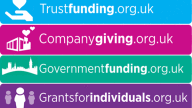Four tips for writing a letter to a grant-making trust
Get the essential tips from a fundraising expert.
It’s sometimes the case that funders will ask for a written letter, rather than providing an application form. This is a great opportunity to show exactly why your organisation deserves funding, however it can be difficult to know where to start. Ahead of her learning lab at Charityfair on writing a letter to a grant-making trust, Kathy Roddy shares four tips on getting it right.
1. Make sure your organisation is eligible for funding
It may seem obvious but in actual fact 28% of funding applications fail because the organisation is ineligible for the funding. It could be that you work with children, but the grant-making trust only gives money to those working with elderly people. So when you are doing research into the trust you need to check things such as; the cause area (children, environment etc.), the right geographical area and make sure you’re applying for the type of funding that the funder wants to give.
2. Include evidence for need and outcomes you provide
One of the biggest reasons for failure is that the applicants don’t have enough evidence for need or are unable to show the difference their project will actually make to the wider world. Trust funders want to make the world a better place, so when they are looking through a pile of letters asking for funding you need to include how you do that or how you plan to do that. High emphasis also needs to be placed on monitoring what happens after the project, to show how your organisation has helped improve a situation or change someone’s life.
3. Tell a story
Because we are so involved with the work of our organisation, it is easy to assume that the work you do is fascinating or makes sense to others. Yet, if you really want people to care or believe in your work you need to tell a story in your letter to the grant-making trust. The best way to do this is to focus on one of your beneficiaries and write about the difference you’ve made to their lives. Real human stories bring to life what you do and if you are able to make that story memorable, funders will be much more likely to pick you out from the pile of applications.
These stories should have an emotional component so that the person reading the letter can relate on a human level. For example, writing ‘we helped Brian get back on his feet and helped him seek employment where he is now a manager and his career is thriving’ rather than ‘we help unemployed people get back into work’, is far more compelling to the person reading your letter.
4. Look after the funders you have
Building and developing relationships with your existing funders is something that is often overlooked by many organisations. If you simply sever your ties with organisations who have already funded you, you are squandering an opportunity with someone who is already invested in your cause. It is much easier to convince a funder who has some prior knowledge of the work you do and has been willing to help your cause than starting from scratch with new funders. Keeping in touch, sharing how you are making leaps for your cause can go a long way and will make them more likely to fund you again in the future.



